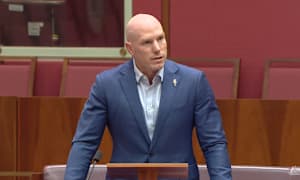Productivity is Canberra’s buzzword of the year and for good reason. Government spending is at its highest level since WWII, care waitlists are ballooning, and the economy is leaning heavily on sectors that aren’t delivering a strong return on investment.
I was shocked to read in the Australian Financial Review that more than half of Australian voters now rely on Government income – whether through pensions, subsidies, or public sector wages.
Add to this a $52 billion NDIS, surging childcare and aged care budgets, and it’s no surprise the Labor Government is under pressure to rein in spending.
The problem? We’re spending more but achieving less.
Care at the epicentre of the crisis
The care economy – aged care, disability, and childcare – is swallowing an ever-larger slice of public funding, projected to hit $110 billion by 2027. Yet productivity remains at its lowest level in 60 years – see below.
As Michael Brennan, former chair of the Productivity Commission, warned this week, we can’t keep pouring labour into these services without rethinking how they work. Strict staff ratios – such as mandated care minutes in residential aged care – may be well-intentioned, but they also cap productivity gains.
Brennan argues lifting productivity in the care economy must be the Government’s top priority. He’s right: not just to curb costs, but to ensure better outcomes for both providers and the people they serve.
In aged care, operators are already straining under funding shortfalls, compliance burdens, and a tangle of red tape that stifles innovation and eats up frontline time.
Enter Plan T: transformation, not tinkering
If aged care is to survive and become “investable” again, Plan T must be part of the solution.
As we’ve argued before, the sector needs to lead its own transformation. That means overhauling admin-heavy reporting, tackling broken funding models, and fixing the systemic cracks instead of papering over them.
With productivity now a national talking point, this is the moment for operators to demand real reform.
The moment is now
The Productivity Commission will soon release a series of five interim reports on lifting national productivity, culminating with ‘Delivering quality care more efficiently’ on 13 August – a potential flashpoint for the sector – ahead of Treasurer Jim Chalmers’ Economic Reform Roundtable next month.
Will Canberra embrace transformation – or keep feeding the spending beast?










